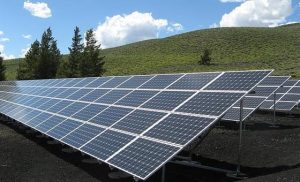What Energy Conversion Occurs in a Photovoltaic Cell?
Photovoltaic (PV) cells, the fundamental building blocks of solar panels, stand at the forefront of harnessing solar energy, converting it into a form that powers everything from homes to spacecraft. But what exactly is the energy conversion process that takes place within these remarkable devices? This article delves into the intricacies of a photovoltaic cell converts sunlight into electricity, highlighting the efficiency, materials, and advancements that define this technology.

The Basics of Photovoltaic Conversion
At its core, the energy conversion occurring in a photovoltaic cell is the transformation of sunlight, a form of energy in photons, into electrical energy. This process hinges on the photovoltaic effect, a phenomenon first observed in 1839 by French physicist Edmond Becquerel. Let's break down the steps involved in this conversion:
- Absorption of Light: When sunlight hits the PV cell, its photons are absorbed by the semiconducting material, typically silicon, used in the cell.
- Generation of Charge Carriers: The energy from the absorbed photons excites electrons, liberating them from their atomic bonds and generating free electrons and holes (the absence of an electron) within the semiconductor.
- Creation of an Electrical Current: An internal electric field in the cell causes these free electrons to move in a directed manner, creating an electrical current.
Key Components of a Photovoltaic Cell
- Semiconductor Material: Silicon is the most widely used material, prized for its bandgap, which is conducive to efficient photon absorption and electron excitation.
- Front and Back Contacts: These allow the harvested electrical current to be drawn from the cell for external use.
- Anti-Reflective Coating: This coating ensures that sunlight is absorbed rather than reflected, maximizing the cell's efficiency.
Efficiency Matters
The efficiency of a photovoltaic cell is a measure of its ability to convert sunlight into electricity. Presently, commercial solar cells have efficiencies ranging from about 15% to 22%, with some laboratory cells achieving over 25%. This metric is constantly being improved through materials science innovations and engineering advancements.
Beyond Silicon: Exploring Alternative Materials
While silicon remains the standard, alternative materials like perovskite, cadmium telluride (CdTe), and copper indium gallium selenide (CIGS) offer promising paths to higher efficiencies and potentially lower manufacturing costs. Each material comes with its unique set of challenges and advantages, fueling ongoing research and development.
The Impact of Technological Advancements
Advancements in photovoltaic technology not only promise to increase the efficiency of solar cells but also to expand their applications and reduce costs. Innovations in cell design, such as tandem cells that layer materials with different bandgaps, aim to capture a broader spectrum of sunlight, pushing efficiency boundaries further.
In conclusion, the energy conversion that occurs in a photovoltaic cell—a photovoltaic cell converts sunlight into electrical energy—is a remarkable process that underpins solar energy's role as a sustainable power source. As research progresses and technology evolves, the potential for photovoltaic cells to meet a greater share of global energy needs continues to grow, marking a promising path toward a cleaner, renewable energy-dominated future.